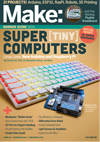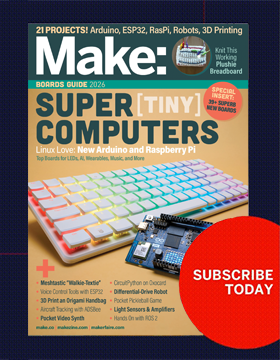MAKE Shows Up On Apple’s Site
We got a lot of email and tweets this morning about the appearance of MAKE on the Apple website to promote their iOS 4.3 software update and faster Safari performance. Sweet! We think MAKE looks and works pretty great on the iPhone and iPad, too. Hopefully the Apple plug will snag us a few more […]








